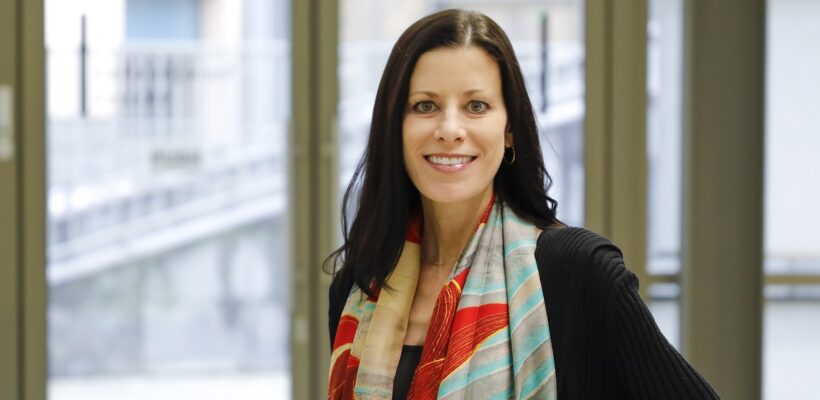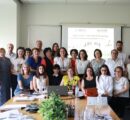
Turpanjian College of Health Sciences Contributes to Developing Smoke-free Coalitions in Armenia
4 min readYEREVAN, Armenia — In 2017, the American University of Armenia (AUA) Turpanjian College of Health Sciences (CHS) Avedisian Onanian Center for Health Services Research and Development (CHSR) received a multi-institute grant from the U.S. National Institutes of Health (NIH)’s Fogarty International Center (FIC) to establish tobacco control models in Armenia and Georgia. The “Smoke-free air coalitions in Armenia and Georgia project: A community randomized trial” concludes in 2023. This project was jointly implemented by Emory University; George Washington University; the National Institute of Health of Armenia, named after academician S. Avdalbekyan; the National Center for Disease Control and Prevention of the Ministry of Health of Armenia; and the National Center for Disease Control of Georgia. Principal investigator Dr. Carla Berg of George Washington University recently visited AUA as a Fulbright Scholar and spoke about how the team developed the project, its implementation, and next steps.
“My area of research is in tobacco control,” explained Dr. Berg. “The scope of the grant was to help implement local coalitions in different communities in Armenia and Georgia and conduct a randomized community control trial which would test the effectiveness of these local coalitions in promoting smoke-free air.” Dr. Berg had previously met CHS Dean Dr. Varduhi Petrosyan during her Fulbright tenure in Georgia in 2013. Considering the extent to which CHS had been successfully pursuing tobacco control, Dr. Berg and her team pulled in their AUA colleagues early on when they were applying for the grant.
The coalitions kicked off their work in 2019. Within the scope of the project, the AUA CHSR team contributed to team brainstorming sessions and regular meetings, intervention development, training sessions, survey methodology, data analysis, and reports and manuscript writing and led the evaluation of the coalitions in Armenia. Tobacco-free coalitions were formed in 7 intervention communities in Armenia (Masis, Sevan, Spitak, Hrazdan, Goris, Vayk, and Dilijan). They have worked throughout the last three years to promote the establishment of smoke-free policies in their respective communities under the guidance of the research team. Coalition leaders and select members were trained in situational assessment, coalition building, action planning, strategy selection, and logic models. They developed action plans and implemented various activities promoting smoke-free environments and policies.
“This project demonstrated the importance of a collaborative and creative approach to addressing community and public health needs through building community coalitions,” reflected Varduhi Hayrumyan (MPH ‘16), CHSR project team member. “These established partnerships have helped to promote community-based solutions to such an important public health concern in Armenia as tobacco use. I am glad I had the opportunity to be part of this goal-oriented and hardworking team.”
The work was complicated by the transformative global events that occurred in the last few years. “Many societal challenges took place in the two countries throughout the grant period,” recounted Dr. Berg. “Most of the activities that the coalitions carried out were focused on their communities, whether in schools or in hospitality settings. The whole idea was to be promoting smoke-free air policies in community settings. COVID-19 shut all of that down, because people weren’t meeting face-to-face and were restricted to their homes for a period of time. Naturally, that complicated the evaluation of whether or not our policies had any effect. Of course, Armenia was also ridden with war, so those two factors combined disrupted the design.”
Recent developments in the tobacco market also posed an additional encumbrance. “They have heated tobacco products and e-cigarettes now,” remarks Dr. Berg. “So people want an answer about those products and how damaging they are. Our take-home message is that any of these byproducts are damaging. Many of the coalitions were passionate about working with kids and promoting youth prevention. That is really where some of these alternative products seem to be the most relevant.”
Based on the results of the study, the CHSR research team published 5 articles and 6 abstracts in peer-reviewed international journals and delivered 4 presentations at international conferences.
“This was an exciting experience demonstrating how international best practices can be translated into the local context and result in valuable changes in Armenian communities under the guidance of international tobacco control experts,” noted Zhanna Sargsyan (MPH ‘18), another CHSR team member.
Though the grant is now concluding the work, its principal mission remains a primary focus for the Armenian coalitions. “Our coalition leaders in the local communities are so enthusiastic about and proud of what they’ve accomplished so far, but they are also adamant that the work isn’t done,” reflects Dr. Berg. She and her research partner Michelle Kegler, professor in the Department of Behavioral Sciences and Health Education at Emory University’s Rollins School of Public Health, have developed a smoke-free home intervention, which has now been tested in trials involving over 8,000 people in the U.S.
“It’s intended to be very easily disseminated, scalable, cost-effective, and, at a population level, it has a pretty solid impact,” explains Dr. Berg. “This intervention can influence people to maintain a smoke-free home, and some folks even quit.” The next step is to draw on the local coalitions to disseminate this smoke-free home intervention, which is the last frontier in tobacco control. “Any time a comprehensive public health policy goes into effect that prohibits smoking in public places, where do people then smoke?” she asks. “Their homes. Our hope is that we can reduce the likelihood of that happening.”
Ultimately, Dr. Berg maintains that the most rewarding part of this experience has been the relationships she’s built with the teams and coalitions in Armenia and Georgia. “I love the fact that the coalitions came together at the end of the project and were so proud of what they had done,” she beams. “Seeing them all interact with each other and be so supportive was deeply gratifying. Long-term change is not going to happen in 5 years, but maybe in 10 or 15 years, we can proudly identify improvements in public health that we have accomplished together as a group. I don’t view this as something that Michelle and I have achieved; rather, we have contributed to what the folks here at AUA and NIH and the NCDC have done. Just to be a part of that has been pretty awesome.”
The AUA Turpanjian College of Health Sciences works actively to improve population health and health services in Armenia and the region through interdisciplinary education and development of public health professionals to be leaders in public health, health services research and evaluation, and health care delivery and management.





